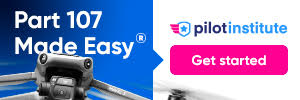Be careful with the wind, keep in mind that the more she struggles with the wind it is going to utilize more battery power.
About a month ago I had an scary situation flying on a windy day, about 15MPH, I thought I was going to lose my aircraft in the ocean running an Autopilot mission. I noticed a bit of wind and my plan to launch and let the aircraft hover for about a few seconds to visually see how she was going to handle the wind. I launched the aircraft with the DJI Go App to a safe altitude of about 30 feet, something I usually do to make sure everything is okay. She seemed fine right after I launched, I hovered for about a minute and felt confident that she could run the entire mission. I closed DJI Go App, launched Autopilot and engaged the mission. AP calculated that entire mission was going to take about 15 minutes, easy peasy i thought. The one factor I underestimated was the wind / battery consumption. The mission completed just fine, my last waypoint was about 2.3miles out and 190ft high in the ocean. In my calculations and based on previous experience flying my P3P, I thought I had enough juice to bring her back with room to spare, away from the critically low battery.
Seems to me that the wind out there could have been a bit stronger, when I started to bring her back my battery had reached a low level. The distance was not that much but the wind was making the trip back to shore an ordeal. Half way on the return trip she was getting close to critically low battery percentage, we all know what this means. It means that the aircraft is going to start a controlled descend in the ocean. Luckily when she reached shore the bird was 1% away from reaching the critical level. Phew..
Learned a good lesson on that day, and was pretty I was going to put one in the drink.
Good luck, do not underestimate the wind. Give yourself room to spare in windy conditions.





